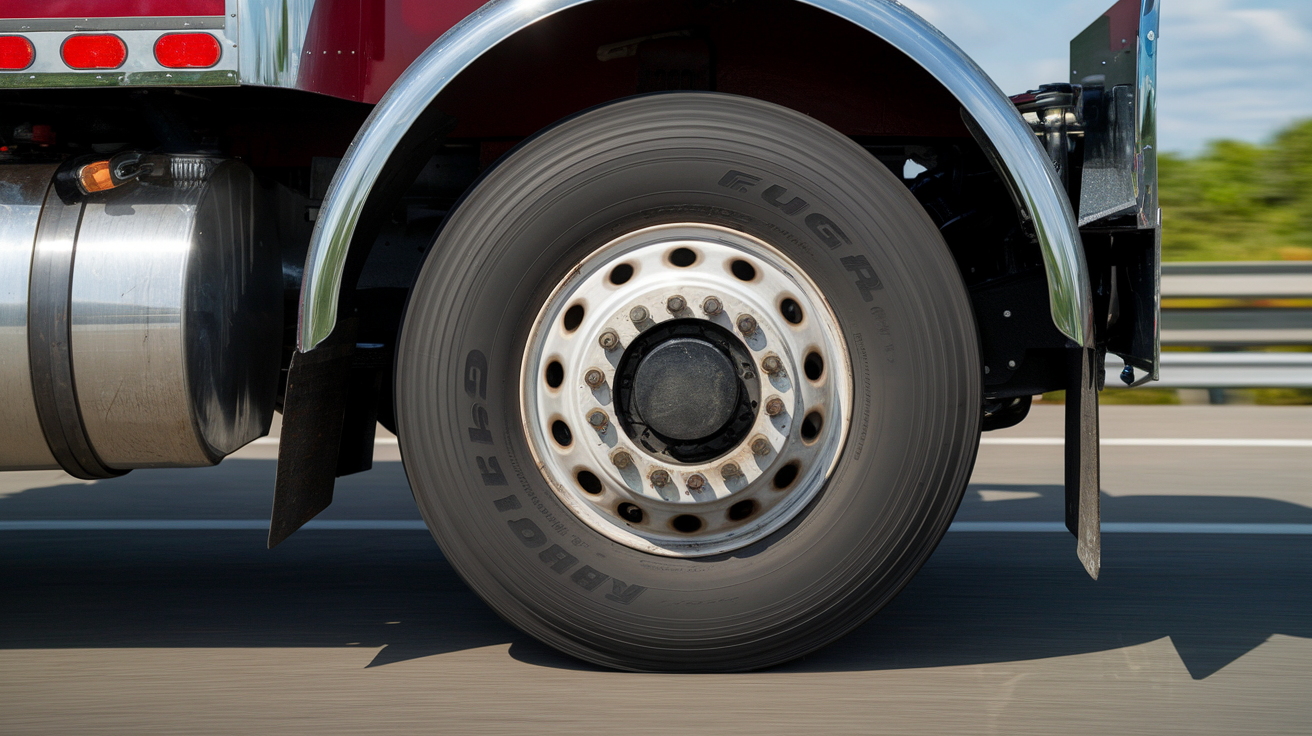Semi truck steer tire wear patterns
Semi truck steer tire wear patterns: Have you ever noticed the uneven wear on your semi truck’s steer tires? 🚛 It’s not just a cosmetic issue—those wear patterns can be telling you a lot about your vehicle’s health and performance. Ignoring these signs could lead to costly repairs, decreased fuel efficiency, and even dangerous driving conditions.
Decoding the language of your tires is crucial for every truck driver and fleet manager. From feathering to cupping, each wear pattern has a story to tell about alignment, inflation, or suspension problems. But here’s the good news: understanding these patterns can help you prevent premature wear, extend tire lifespan, and ultimately save money on your operations.
In this blog post, we’ll dive deep into the world of semi truck steer tire wear patterns. We’ll explore how to identify specific wear patterns, uncover the causes behind abnormal wear, and provide you with practical tips to prevent premature wear and extend your steer tires’ lifespan. Let’s roll into the details and keep your rig running smoothly on the road ahead! 🛣️
Understanding Semi Truck Steer Tire Wear Patterns
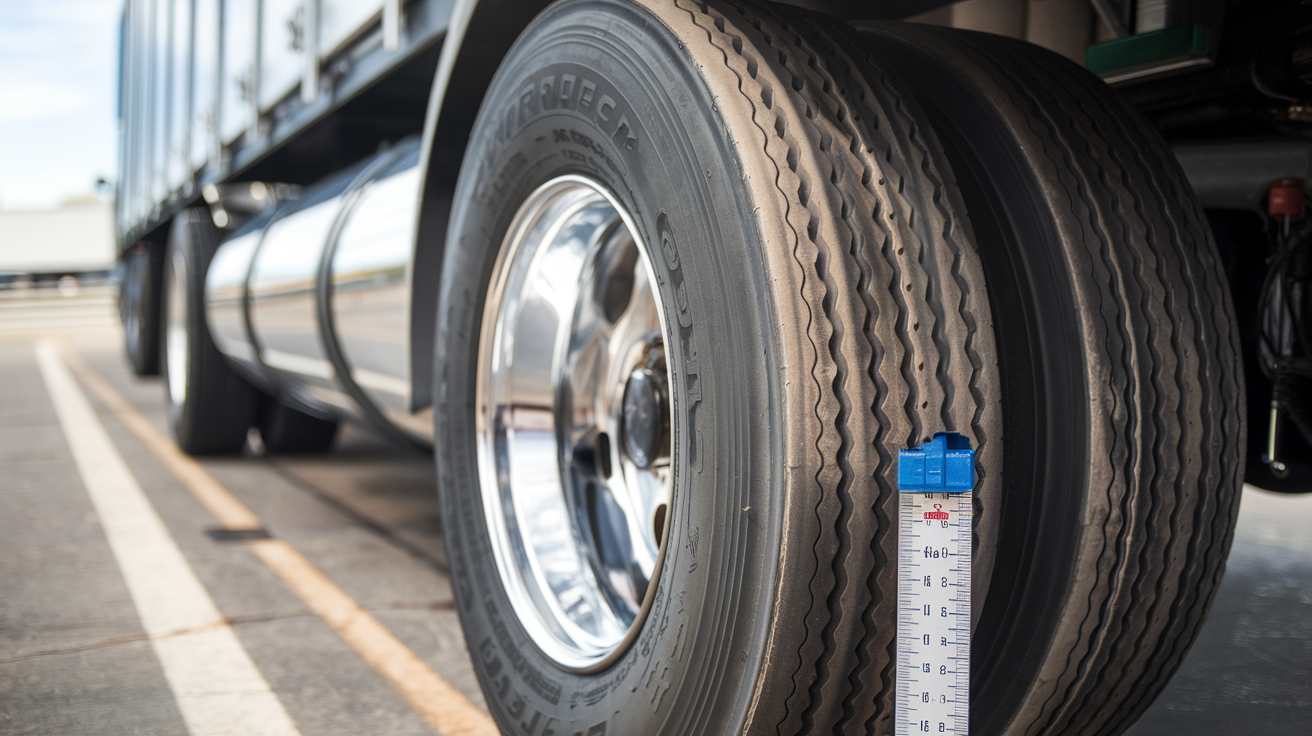
A. Importance of monitoring steer tire wear
Monitoring steer tire wear on semi trucks is crucial for several reasons:
- Safety: Worn steer tires can compromise vehicle control and stability
- Performance: Proper tire condition ensures optimal fuel efficiency and handling
- Cost-effectiveness: Early detection of wear patterns can prevent premature tire replacement
- Compliance: Regular inspections help meet regulatory requirements
| Aspect | Benefit of Monitoring |
|---|---|
| Safety | Reduces accident risk |
| Performance | Improves fuel economy |
| Cost | Extends tire lifespan |
| Compliance | Ensures legal operation |
B. Common types of wear patterns
Semi truck steer tires can exhibit various wear patterns, each indicating different issues:
- Center wear: Overinflation or misaligned axles
- Edge wear: Underinflation or improper camber
- Cupping: Suspension problems or wheel imbalance
- Feathering: Misalignment or worn suspension components
C. Factors influencing wear patterns
Several factors contribute to steer tire wear patterns:
- Tire pressure
- Alignment
- Suspension condition
- Load distribution
- Driving habits
- Road conditions
D. Impact on vehicle safety and performance
Abnormal steer tire wear patterns can significantly affect a semi truck’s operation:
- Reduced traction, especially in wet conditions
- Increased stopping distance
- Poor fuel economy
- Difficulty maintaining straight-line stability
- Higher risk of blowouts or tire failure
By understanding these wear patterns and their implications, fleet managers and drivers can take proactive measures to ensure optimal tire performance and safety. Regular inspections and maintenance are key to identifying and addressing issues before they escalate into more serious problems.
Identifying Specific Wear Patterns
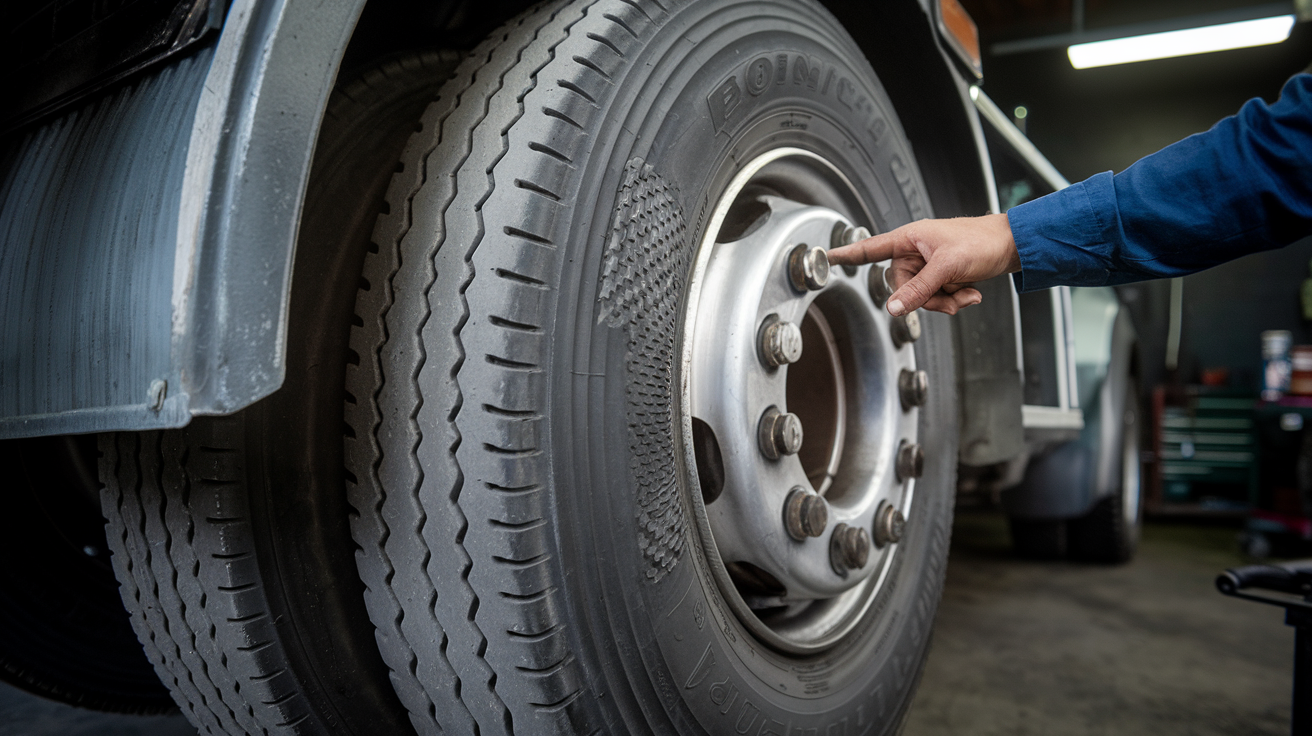
Center wear
Center wear on semi truck steer tires is characterized by excessive wear along the center of the tire tread. This pattern is easily identifiable by a smooth, worn strip running down the middle of the tire.
| Causes | Solutions |
|---|---|
| Over-inflation | Adjust tire pressure to manufacturer’s specifications |
| Incorrect load distribution | Ensure proper weight distribution across axles |
| High-speed driving | Adhere to recommended speed limits |
Edge wear
Edge wear occurs when the outer edges of the tire tread wear faster than the center. This pattern is visible as two worn strips along both sides of the tire.
- Underinflation is the primary cause
- Can lead to reduced fuel efficiency and increased risk of blowouts
- Regular pressure checks are crucial for prevention
Cupping or scalloped wear
This wear pattern appears as alternating high and low spots around the tire’s circumference, resembling a series of cups or scallops.
Feathering
Feathering is characterized by smooth wear on one side of the tread ribs and sharp wear on the other. To detect feathering:
- Run your hand across the tire tread
- Feel for smooth texture in one direction and rough in the other
One-sided wear
One-sided wear occurs when one side of the tire wears faster than the other. This pattern is often indicative of alignment issues or bent axles.
Now that we’ve identified specific wear patterns, let’s explore the causes behind these abnormal wear patterns in more detail.
Causes of Abnormal Wear Patterns
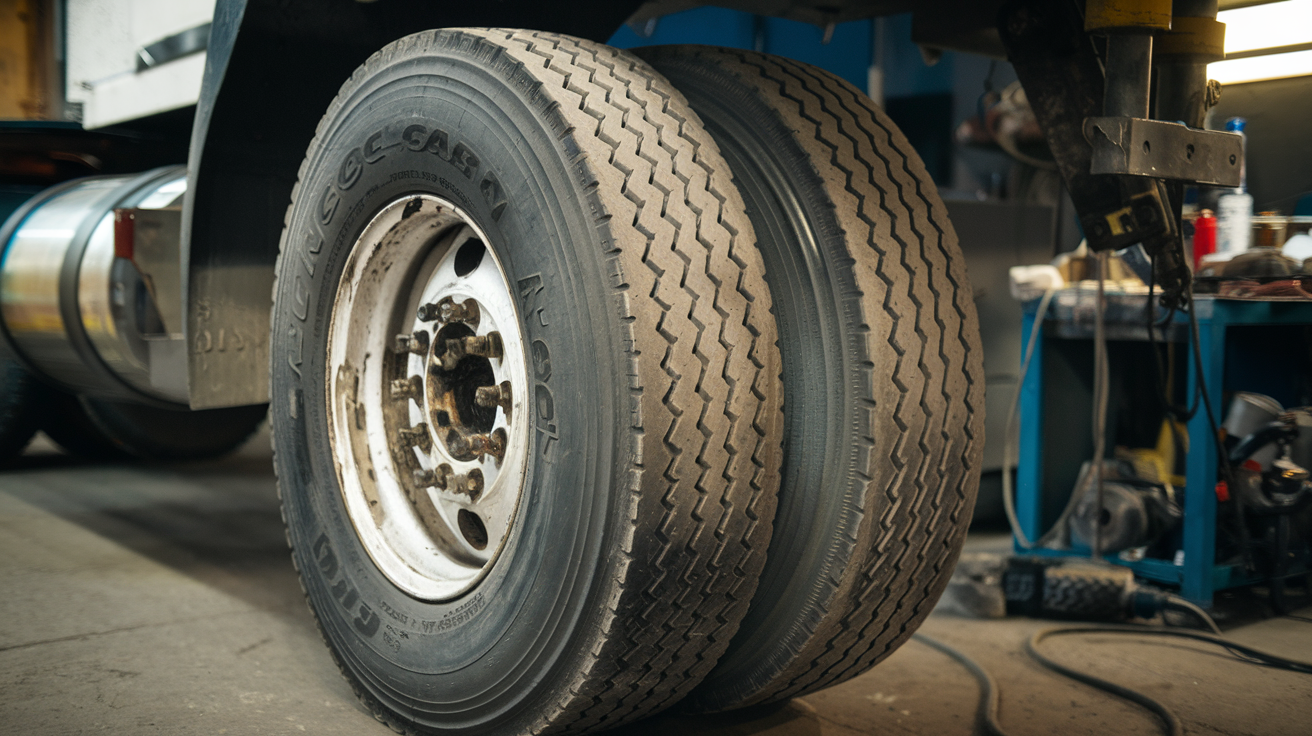
Improper inflation pressure
Improper inflation pressure is one of the leading causes of abnormal wear patterns in semi truck steer tires. Both overinflation and underinflation can lead to significant issues:
| Inflation Issue | Wear Pattern | Consequences |
|---|---|---|
| Overinflation | Center wear | Reduced traction, increased risk of blowouts |
| Underinflation | Edge wear | Excessive heat buildup, reduced fuel efficiency |
To prevent these issues, regularly check tire pressure and maintain it within the manufacturer’s recommended range.
Misalignment issues
Misalignment is another common culprit behind abnormal steer tire wear. Types of misalignment include:
- Toe misalignment
- Camber misalignment
- Caster misalignment
Each type of misalignment results in different wear patterns, such as feathering or one-sided wear. Regular alignment checks and adjustments are crucial for maintaining proper tire wear and vehicle handling.
Suspension problems
Worn or damaged suspension components can lead to uneven tire wear. Common suspension issues include:
- Worn shock absorbers
- Damaged springs
- Loose or worn ball joints
- Faulty tie rod ends
These problems can cause excessive bouncing, uneven weight distribution, and poor tire contact with the road, leading to irregular wear patterns.
Driving habits and road conditions
Lastly, driving habits and road conditions play a significant role in steer tire wear. Factors to consider include:
- Frequent hard braking or acceleration
- Sharp turns at high speeds
- Driving on rough or poorly maintained roads
- Overloading the vehicle
Now that we’ve explored the causes of abnormal wear patterns, let’s look at strategies for preventing premature steer tire wear.
Preventing Premature Steer Tire Wear
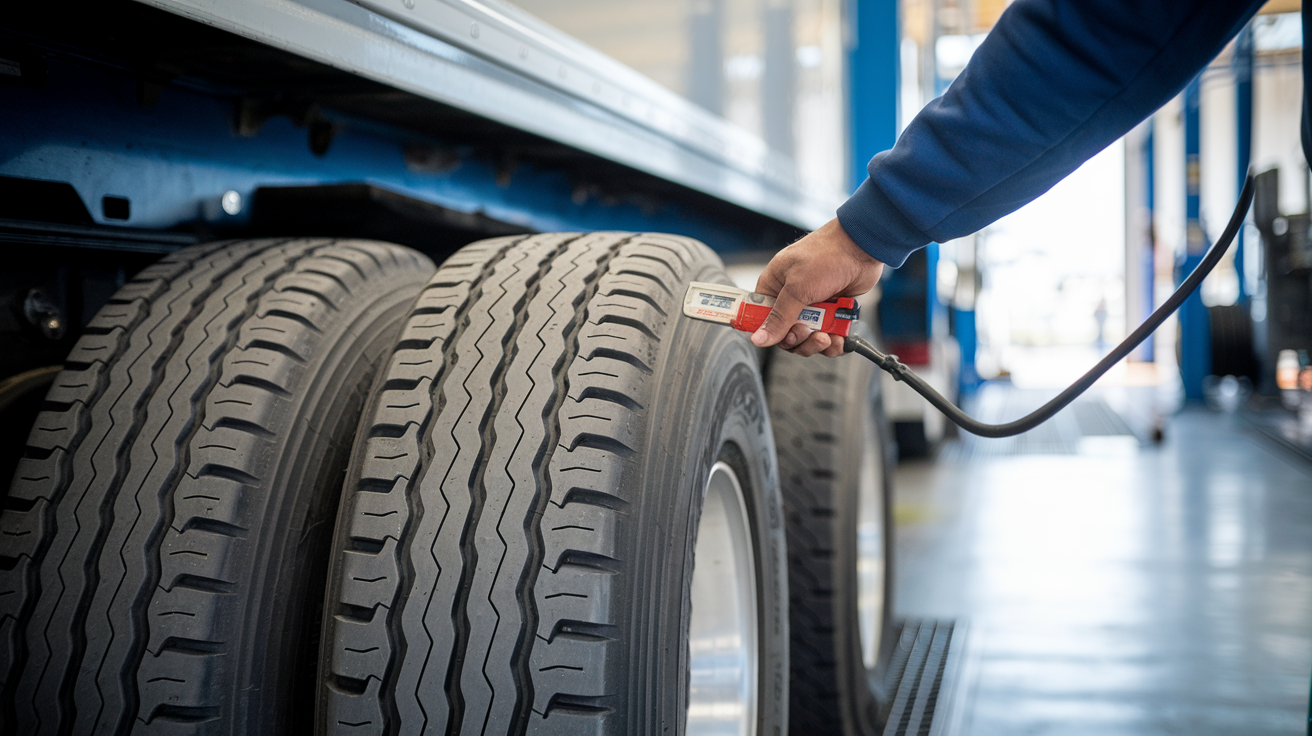
Regular tire inspections
Regular tire inspections are crucial for preventing premature steer tire wear on semi trucks. By implementing a systematic inspection routine, drivers and fleet managers can identify potential issues before they escalate into costly problems.
Inspection checklist:
- Tread depth measurement
- Sidewall condition assessment
- Valve stem integrity check
- Rim and bead examination
- Abnormal wear pattern identification
Conducting these inspections at least once a week or before long hauls can significantly extend tire lifespan and improve overall vehicle safety.
Proper tire inflation maintenance
Maintaining correct tire pressure is essential for optimal performance and longevity of steer tires. Under-inflated or over-inflated tires can lead to uneven wear patterns and reduced fuel efficiency.
| Inflation Status | Effects on Tire Wear |
|---|---|
| Under-inflated | Increased shoulder wear, heat buildup |
| Over-inflated | Center tread wear, reduced traction |
| Properly inflated | Even wear, optimal performance |
Use calibrated pressure gauges and check tire pressure when tires are cold for accurate readings.
Wheel alignment checks
Proper wheel alignment is critical for preventing abnormal tire wear on semi trucks. Misalignment can cause rapid and uneven wear, reducing tire lifespan and compromising vehicle handling.
Key alignment parameters:
- Camber
- Caster
- Toe-in/Toe-out
Regular alignment checks, especially after hitting potholes or curbs, can help maintain optimal tire performance and extend their useful life.
Rotation and balancing schedules
Implementing a consistent rotation and balancing schedule helps distribute wear evenly across all tires, including steer tires. This practice can significantly extend tire lifespan and improve overall vehicle performance.
Extending Steer Tire Lifespan
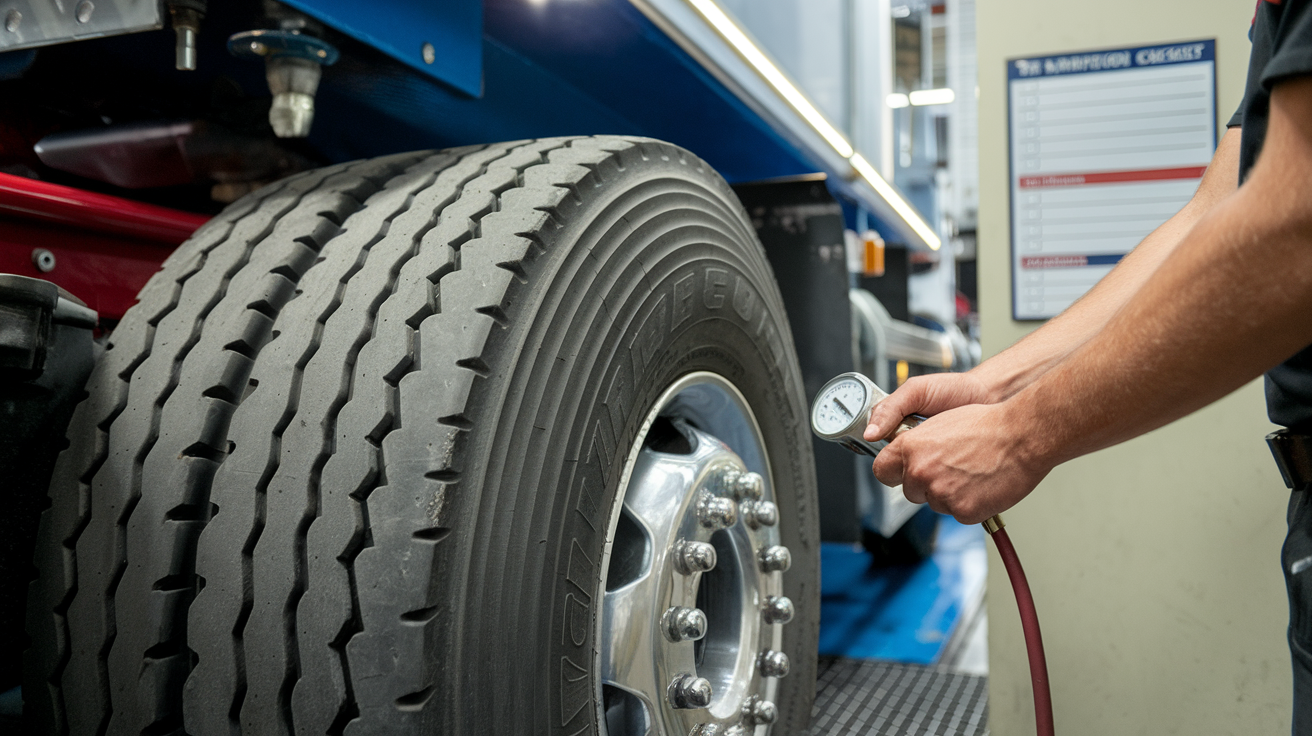
A. Choosing the right tire for your operation
Selecting the appropriate steer tires for your semi truck is crucial for maximizing lifespan and performance. Consider the following factors:
- Application-specific design
- Load capacity
- Tread pattern
- Compound durability
| Tire Type | Best For | Key Features |
|---|---|---|
| Rib tires | Highway use | Excellent stability, low rolling resistance |
| All-position tires | Mixed service | Versatile, suitable for various road conditions |
| Wide-base tires | Weight-sensitive loads | Reduced overall weight, improved fuel efficiency |
B. Proper load distribution
Ensuring correct load distribution is essential for extending steer tire lifespan:
- Maintain proper weight balance between steer and drive axles
- Avoid overloading the steer axle
- Use appropriate fifth wheel positioning
- Regularly check and adjust air suspension systems
C. Driver training for tire care
Educating drivers on tire care practices can significantly impact steer tire longevity:
- Proper inflation techniques
- Regular visual inspections
- Identifying early signs of wear
- Reporting any unusual tire behaviour
D. Implementing a tire management program
A comprehensive tire management program is key to extending steer tire lifespan:
- Schedule regular tire rotations
- Conduct frequent alignment checks
- Monitor tire pressure with TPMS (Tire Pressure Monitoring System)
- Track tire performance and wear patterns
- Implement a proactive replacement strategy
By focusing on these aspects, fleet managers can significantly extend the lifespan of their semi truck steer tires, reducing costs and improving overall operational efficiency.
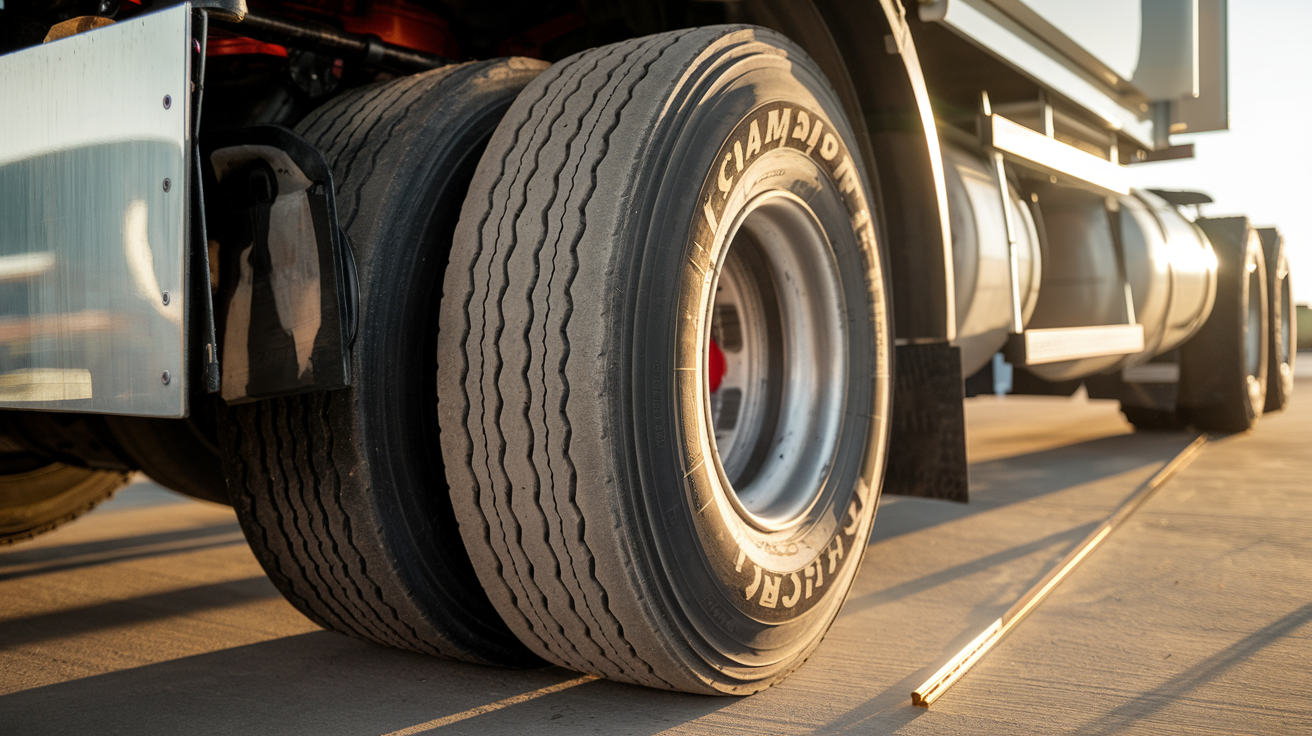
Recognizing and addressing semi truck steer tire wear patterns is crucial for maintaining vehicle safety, performance, and operational efficiency. By understanding the various wear patterns, their causes, and preventive measures, fleet managers and drivers can significantly extend tire lifespan and reduce maintenance costs.
Regular inspections, proper alignment, and maintaining correct tire pressure are key steps in preventing premature wear. By implementing these practices and staying vigilant about tire condition, trucking companies can ensure optimal performance, enhance road safety, and maximize their return on investment in steer tires. Remember, proactive tire management is not just about cost savings – it’s about keeping drivers safe and vehicles running smoothly on the road.
Interested in bulk truck tire purchases? Contact us today, and our experienced team will connect you with a trusted wholesale supplier in Thailand. We provide seamless access to premium-grade products, competitive pricing, and a reliable supply network—customized to support your high-volume procurement requirements.


